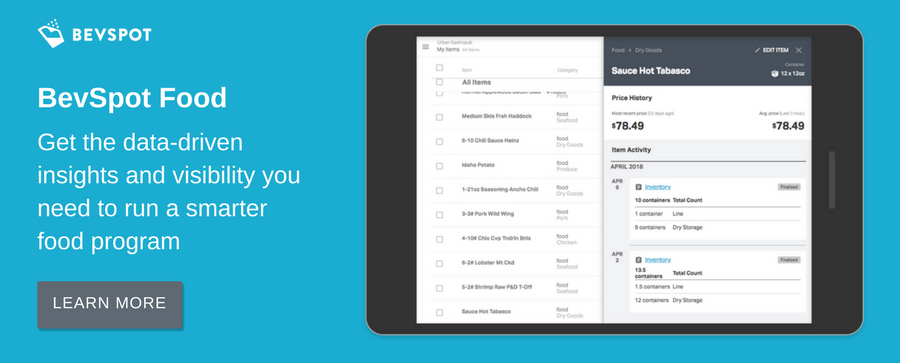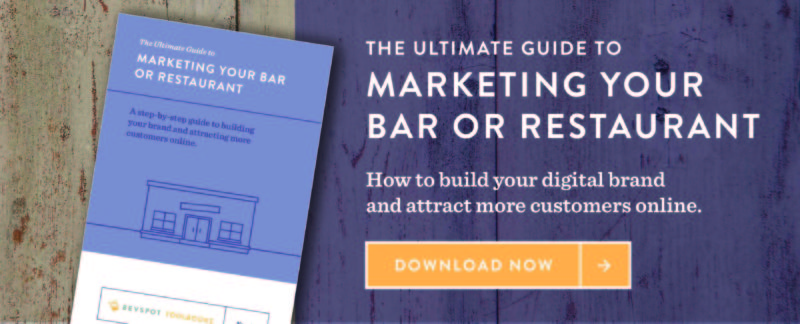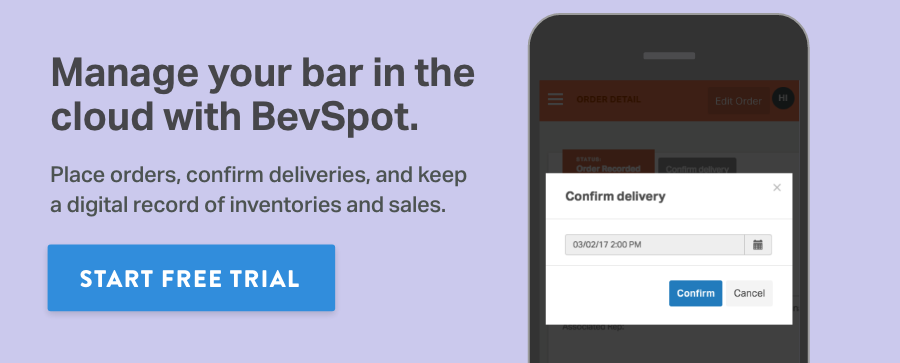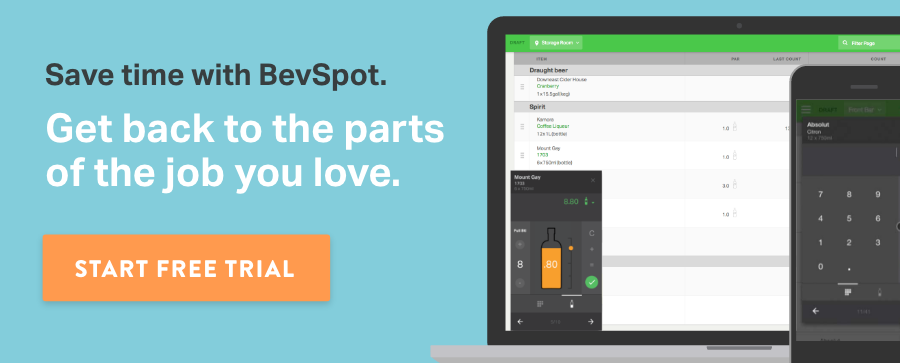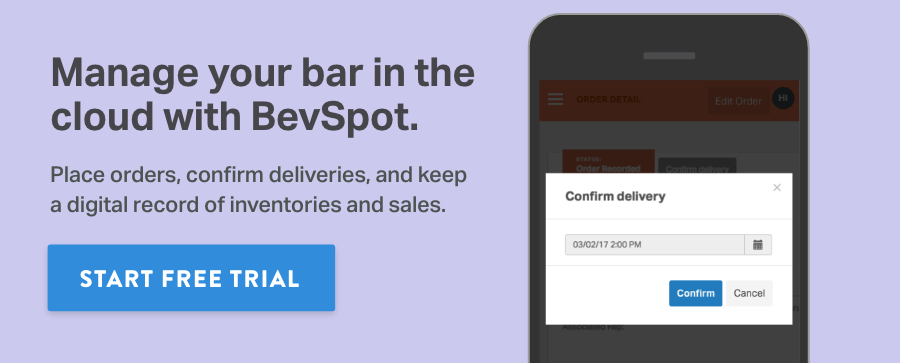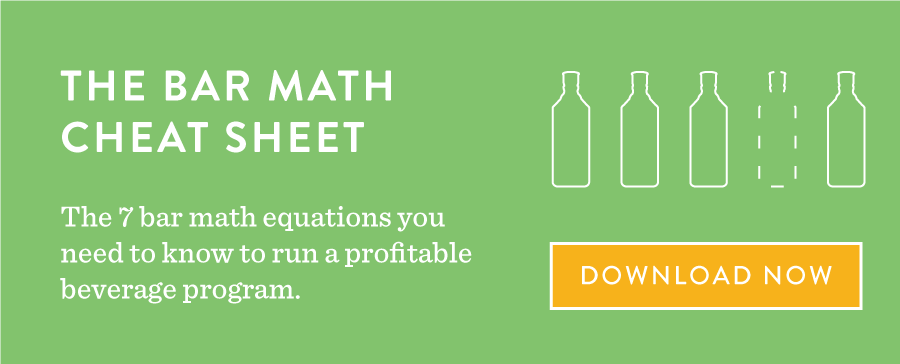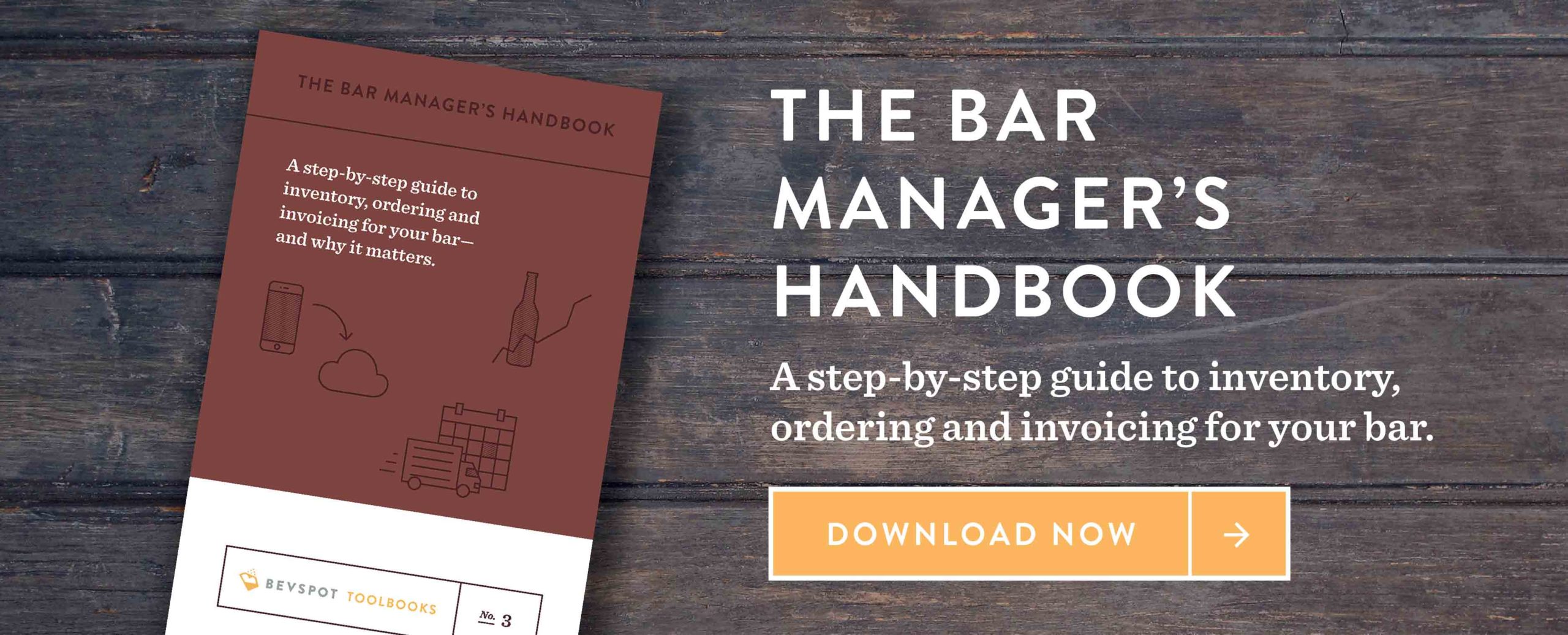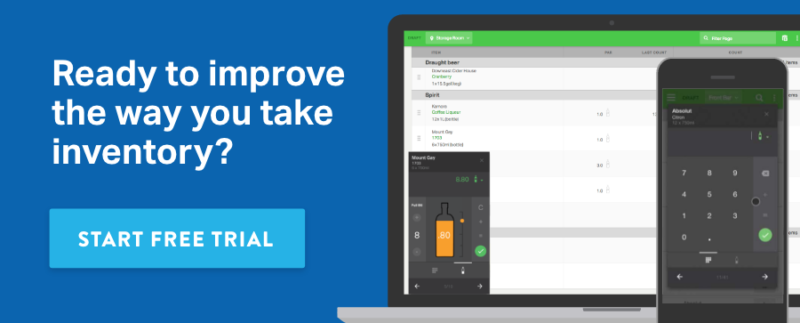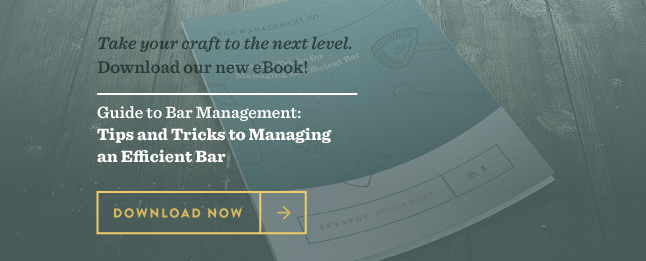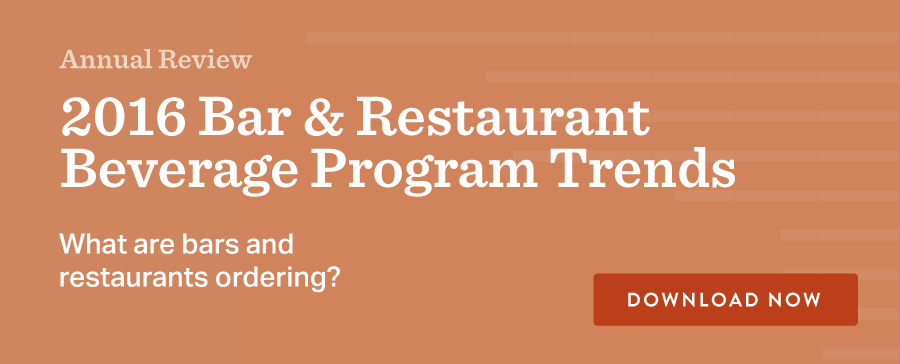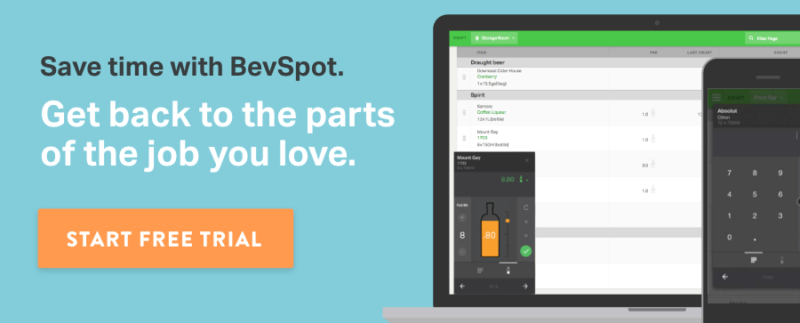The 6 Most Common (and Preventable) Rookie Bartender Mistakes
Make your and your fellow team members’ lives easier by avoiding these typical flubs…
Whether it was “shaking” with a plastic tumbler attached to a small rocks glass or using a pint glass to scoop ice, my bartender beginning is rife with fails and lessons learned. To keep you from learning the hard way, here are the six most common rookie bartender mistakes that need to be stopped before they ever start:
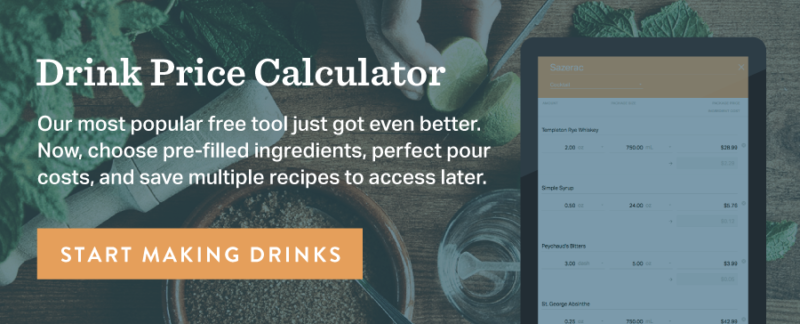
Bar Upkeep
1. Keep it clean, you filthy animal
One of the biggest mistakes I’ve made and one of the biggest issues I run into with nearly all rookie bartenders is our ability to keep things clean. Some examples of things not to do:
- Leaving your dirty shaker on the bar top and schmoozing with the guests instead of cleaning it and putting it away. You should be cleaning them right after you use them.
- Leaving dirty rags out for a guest to see. You might not think they notice, but they do.
- Not having a fresh sanitizer bucket for a shift. Cleaning your bar with a rag and water is about as useful as rinsing your hands with water.
2. Stay organized
This is one of the rough spots that every bartender, no matter how experienced, has gone through. Placing your bottle in the right spot in your well, resetting your mise en place, taking the time to cut bar fruit, and setting up your bar top before the start of a shift pays dividends to you and the rest of your bar team. You’ll be a faster bartender and you won’t be one who misplaces items every time.
Bartending Technique
3. Glass, meet ice
This is incredibly important, so say it with me, “I will not use a glass to scoop ice.” That moment glass hits your ice well, even if you don’t see a fracture, some of that glass will sliver into your ice. You will be serving your guests ice with pieces of glass in it. Even worse, if the glass happens to break into the ice, you’ll have to spend the needless time to burn (melt) the ice and find every piece of glass in the well. You’ll have no one else to blame but yourself on a busy Saturday night.
4. The claw
Whenever I see servers, bartenders, managers, or anyone picking up dirty glasses from the top and touching the inside of the glass with their fingers, it makes my skin crawl. Not only is it completely unsanitary, it also looks bad to your guests. Do your guests a favor and use a tray or at least start carrying it from the bottom.
5. Your beer glass runneth over, sir
Another common bartender mistake is pouring a beer incorrectly. In case you need a refresher, the key thing to note is that draft faucet should never touch the inside of the glass.
Team Attitude
6. Check your ego at the door
This last mistake is a common one for even the most experienced bartender. No matter how long you’ve worked in the industry, when you join a new bar team, you are a rookie. You need to learn that establishment’s system and your new team members’ tendencies. Even if you notice things that the team could be doing better, coming in with an attitude is a quick way to earn yourself an exit. Be respectful with your feedback and be open to learning.
Are there other common rookie bartender mistakes you see that we haven’t covered here? Let us know in the comments and let’s grow together.
Schedule 15mins to chat with a product specialist
Start a FREE Trial Today! BevSpot offers full product education and account setup for all customers! No card Information needed!
Unique Event Ideas for Your Bar or Restaurant
Here’s how you can get out-of-the-box and help drive guests to your door…
Live music, trivia, and karaoke are time-honored go-to’s when you’re hosting fun activities to draw people to your bar or restaurant. But, what if you want to mix it up and try something a bit more creative? Innovative, unique events are a chance to attract eyes and guests by expressing your originality. Living in the unofficial “Creative Capital” of the US, Providence, Rhode Island, I tend to see interesting event concepts taking place at venues all over town. I’ve looked into some of my favorite examples to hopefully inspire you to do something similar, or totally different, at your own bar or restaurant.
One-time or recurring events?
First, you’ll want to decide if your goals are suited for a one-time party or something recurring. Are you looking to host an event weekly, monthly, seasonally, annually, sporadically, or one time only?
One-time only events can help create buzz on an anticipated slower night. It can also be used to put the spotlight on your establishment’s relationship with local charitable organizations or help run through anything you might be overstocked on behind the bar with themed specials.
Recurring events like the free “Tropical Hot Dog Night” that Nolan’s Pub hosts every Monday can bring in guests on a more consistent basis and help establish you as a fun hangout spot within your neighborhood. These kind of events can also be a boon especially for newly opened establishments. For example, Freeplay Arcade Bar offers regular half-price nights during the week to bolster their non-weekend business.
Events that celebrate seasons and holidays
Major holidays offer excellent opportunities to bring patrons in to celebrate with you. I’ve noticed quite a few Providence bars hosting Oktoberfest celebrations this year, including the popular three-day outdoor Oktoberfest celebration hosted by The Malted Barley.
Halloween is, of course, another amazing opportunity to go all-out and flex your event-planning muscles—just make sure that the night you’re shooting for doesn’t already have a lot of steep competition happening in your neighborhood. Costume contests are an obvious go-to, but some bars get creative with their themes and offerings. For example, in 2015 The Dorrance went for a theme with their “A Tarantino Halloween,” with music and a prize to match.
Events that give back
As the end-of-year holiday season approaches, with it comes countless opportunities to partner with local charities for food, coat, toy drives and more. Santa Crawls have become ubiquitous—there’s even a Krampus Walk here in Providence—and you may opt to become a stop along their jolly trail, but be prepared for raucous antics especially if you’re situated towards the end of the path. After that, New Year’s is obviously its own animal, and then it’s not long at all until Chinese New Year, Mardi Gras, St. Patrick’s Day, and more.
Hopefully, these examples will give you some creative inspiration when it comes to mixing up your own unique events. Make sure to play up the already existing strengths of your establishment and choose themes or activities that will both appeal to your regular demographic and hopefully draw in some newcomers. Most importantly, have fun with it!
Schedule 15mins to chat with a product specialist
Start a FREE Trial Today! BevSpot offers full product education and account setup for all customers! No card Information needed!
How To: Managing Allergies in Your Restaurant
With food allergies on the rise, restaurants must maintain constant vigilance and preparedness to protect patrons…
Food allergies from shellfish to tree nuts are on the rise. According to the CDC, the incidence of food allergies rose nearly 50% from 1997 to 2011. It’s an interesting stat, but what’s a bar or restaurant’s responsibility to keep patrons safe? And how can you go about doing it?

Implementing food allergy precautions
Here are six common and creative ways to manage allergies in your restaurant or bar:
1. Special menus
One of the most common methods of alerting your patrons to potential allergy complications is to mark them on the menu. If you really want to go the extra mile, create completely separate menus that are 100% safe for people with specific allergens.
2. Separate prep space or cookware
Designating a separate kitchen space and incorporating labeled cookware specifically for preparation of non-allergenic food, drastically lowers the odds of an accidental allergic reaction.
3. Informed staff
When training your staff, bartenders and servers should be educated about which potential allergies can be found in food, drinks, and even garnishes. Allergens can show up in the strangest places. Did you know that maraschino cherries have nut oil in them?
4. Permanent menu substitutions
Making substitutions in a high-volume kitchen can be challenging. Consider swapping out an offending ingredient for a non-allergenic substitution for all batch cocktails or food to avoid complicated substitutions.
5. POS allergen alerts
Certain POS systems can be equipped to deal with allergens. P.F. Chang’s POS not only has an allergen button to alert chefs, but can also scrub the menu to eliminate items with allergens to make menu recommendations easy and safe.
6. Strategic allergy-friendly seating
Heat from cooking certain foods and chemicals can cause the allergen to go airborne. With the constant movement of servers, bartenders, and barbacks, sitting at the bar or near the kitchens can become a potential trigger for a patron with a food allergy. If you have someone controlling seating, ensure they know to ask if anyone has severe allergies and would like to be seated accordingly. A bartender can make sure to accommodate anyone sitting at the bar with the same quick question.
When allergy precautions aren’t enough
For all your caution and good intentions, something will inevitably go wrong. It’s terrible and sometimes unavoidable. This doesn’t mean that you should be unprepared. Here’s how to be prepared for when allergy disaster strikes:
1. Keep an emergency allergy kit
From something small like benadryl, to something a bit stronger like an EpiPen, an emergency kit can help to lessen discomfort, or even save a life. Benadryl is fast-acting, cheap, and can help with minor to moderate reactions. While they are expensive, an EpiPen only needs to be purchased once every 18 months to maintain potency.
2. Create a solid emergency plan
It cannot be overstated enough—having a disaster plan that your staff is well trained and competent in can be a literal lifesaver. Run drills to make sure everyone knows their responsibility, such as who is calling 911 and who is attending to the people in need. Giving everyone a role, and knowing that your staff is capable and ready to act, is every bit as important as any other precaution you take.
It takes work and prep to become an allergen-friendly establishment. But, it is work that’s well worth it. 200,000 people a year are sent to the emergency room due to allergic reactions to food and drink. Any number of these can result in lawsuits, serious injury, or death. Taking precautions, training staff, and being prepared for the worst can save lives.
Additionally, people with severe allergies remember businesses that take the time to keep them safe. When eating out is usually a chore of specific ordering, apologies, and worry, finding a spot that makes them feel welcome and safe can lead to an enhanced reputation, and potentially enhanced business.
Schedule 15mins to chat with a product specialist
Start a FREE Trial Today! BevSpot offers full product education and account setup for all customers! No card Information needed!
Industry News Roundup: Protest and Creepy Dolls
This month, many bars were forced to sweat the big stuff (and the small stuff too).
Before getting to lighter fare, we’d be remiss not to acknowledge that one of the biggest stories relating to the bar industry at the moment is actually an important sports story. In fact, we even touched on this very topic last month, when a Chicago publican vowed to no longer air NFL games in his two establishments in a show of solidarity with free agent quarterback Colin Kaepernick. Kaepernick, to briefly recap, attracted wide attention in 2016 for kneeling during the pre-game singing of the National Anthem as a means of protesting state violence against minorities. And now we’re dealing with the flipside of that coin.
This past Sunday, in response to President Donald Trump’s controversial comments on the matter, more players than ever participated in the Anthem protest. And in turn, bars all over the country have made news for swearing off the NFL as well. This time, though, they’re not doing so in solidarity with the players protesting. Rather, boycotting is the bar industry’s way of protesting the league itself for allowing its players to kneel in the first place, something many perceive to be a slight against the flag and military.
There seems to be no geographic pattern to bar industry boycott. Bars in the northeast in Massachusetts and New York, down south to Louisiana and South Carolina, and heading west from there, first to Texas and ultimately California, and elsewhere, are all making their own positions on the matter clear.
What’s unclear at the moment, however, is what kind of impact, if any, such boycotts might have on sales and patronage.
“If people don’t come in to watch football, that would have a huge effect on business,” said one bartender in Texas. Another in New York said, “I can sense a slight drop off in bar attendance since this [protest] started.” That said, bars elsewhere claim business has gone on as usual and they expect as much going forward. If week three in the NFL provided any indication, though, this issue isn’t likely to go away soon. So bar owners that rely on showing games to bring people in the door should think deeply about their own positions on the issue if they haven’t already yet.
But not every worthwhile story carries such heavy weight, and, as always, there are other interesting things to make note of in the bar world.
GQ, for instance, polled four bartenders on the subject of distinguishing a good cocktail bar from a bad cocktail bar. The piece is ostensibly meant to help educate drinkers, but the wisdom therein should resonate with those on the other side of the bar as well. It’s doubly useful because while implementing some of the tips contained might require a good bit of effort, there are tidbits that require next to no effort at all. JD Quioco of the Fainting Goat in Washington, D.C. advises, “If someone says ‘hi’ to you within the first 10 seconds…give that bar a chance. That attention at least shows they care. Then you’ll just have to wait and see.”
But bars shouldn’t just rely on tangible advice for inspiration.
They should take a look around and see some of the crazy and unique things their brethren mixologists are doing across the country.
Take Creepy’s, which recently opened in Portland, Oregon. The bar has garnered considerable buzz for both its menu and the surreal décor befitting its name. Writes the Willamette Week: “The new Southeast Morrison Street space from the owners of White Owl is less horror house than sideshow—a design-happy display case of dolls, deer heads and big-eyed kitsch, presided over by a giant painting of John Quincy Adams with moving eyes.” Or how’s this, from Travel & Leisure: “This laundromat is actually a secret cocktail bar.” Or even this from the Los Angeles Times: “Owner of Burbank’s new esports bar wants it to be ‘better than being at your friend’s apartment for game night’”
The point is, reimagining and innovating what the bar experience can be doesn’t merely have to happen behind the bar itself. It can come from how one decorates, or paradoxically, conceals itself from plain view, or even how it serves to bring in new aspects to establish the feeling of hanging out with friends at home.
Of course, good drinks will never hurt either.
The Right and Wrong Ways to Handle Bad Online Reviews of Your Bar
It’s one of the most dreaded and challenging aspects of running a business: managing bad reviews.
Bars and restaurants have countless moving parts and are so public-facing that it’s that much tougher to try to control every variable, and the age of social media has given everyone and their dog’s cousin’s hairdresser an instantaneous, unfiltered voice. Someone’s offhand, sour, heat-of-the-moment Yelp or TripAdvisor review, which takes them all of five minutes to post, can become almost impossible to scrub away from your reputation—even if it is based on a misunderstanding or an outright lie.
To figure out how bars and restaurants can effectively handle bad reviews, I sat down with my friend Kait Curtis, who has worked in PR for 5 years—part of it for a reputation management firm—and has represented several bars and restaurants. She also founded and still runs the popular Providence Eats blog and Instagram account.
Every establishment has heard the horror stories, and some of you have even lived them. So, what are the best ways to handle bad reviews?
Be Active
Kait noted that there are legitimate reviews as well as what loosely fall under the category of “false reviews”: reviews that are inaccurate because they happened as the result of a one-off incident that doesn’t actually represent your business fairly, or perhaps are smear attacks from a competitor or overly-biased source.
Kait says, “If someone posts a review with a legitimate concern about your business, don’t ignore it; hear them out. If you respond genuinely, guests will appreciate you taking the time to engage with them and hear out their complaints. This also opens the door to explain your side and add a human touch.”
In the case of legitimate reviews, you should “always respond,” she continues. “Not responding is the worst tactic you can have, and don’t use an automated response. Take a breath first; it’s going to suck, but really think about what you’ll say to them before you dive in.”
The exception to the rule of “always respond” applies when a negative review is flagrantly false or if you truly have no response—in that case, it’s okay to ignore it, Kait says. “If almost all of the rest of your reviews are very positive, don’t worry about it.” If the bulk of your reviews are neutral or negative, however, you will want to do some serious soul-searching as an establishment and try to isolate and address recurring problem areas.
Kill Them With Kindness
Kait recommends taking whatever negative the guest has pointed out and finding a way to turn it into a positive. Maybe it’s your staff’s keen attention to detail and care for perfecting the customer experience that cause them to operate a little on the slower side, for example. Maybe it’s your restaurant’s reputation and popularity that make it tough to seat people as quickly as they might like during busy season nights.
“Don’t get defensive,” Kait explained to me, “and don’t make it seem like their concern is not worth your time. You should come across as if you care, no matter how small or irrelevant the complaint might seem.”
Erasing The Graffiti
Can bad reviews be removed?
Yelp does have a reporting system that serves this purpose once you’ve claimed the business listing (if you haven’t already), but those who’ve tried to use this function know that it can take an extremely long time and may not even get the results you want in the end. TripAdvisor will remove a bad review if you can prove that it violates their posting guidelines but again, this can be a very difficult battle.
Occasionally, businesses have tried to sue customers over bad reviews, but this seems like a very costly, time-consuming, and potentially embarrassing way to solve such a problem. If you’re really that worried about it, Kait suggests not signing up for review sites in the first place—or at least wait until the beginning phase of your roll out is completed and you’ve had time to iron out the kinks that inevitably occur when launching a business.
Spinning The Bottle
It occurs to me that there’s another angle you could take if you ascribe to the saying that “There’s no such thing as bad press.” There are plenty of examples of online altercations which have gone viral if they were particularly funny or over-the-top, which will certainly draw additional eyes to your establishment, and depending on how you handle it, you may come out looking like the hero in the situation—but it’s a risky move and could result in negative attention.
The Old Butcher’s bar in Bristol, UK took one of the most innovative and hilariously sarcastic approaches yet to a bad review: naming a special drink in its honor. Now that’s making lemonade (or a blue cocktail, in this case) out of lemons!
Do you have any hilarious or horrific review stories you’d like to share? Write them in the comments below!
Related Articles
How to Manage Online Restaurant Reviews the Right Way
How to Approach Reservations and Waitlisting Technology Solutions
Restaurant Owners: Why “Good Enough” Won’t Cut It
When You Should Shake or Stir A Cocktail
He might be a great spy, but James Bond is not a great mixologist…
“Shaken, not stirred.” It’s a line that’s made it’s way through the annals of pop culture and drinking lore ever since Sean Connery first ordered a Martini in 1964’s Goldfinger. Funny thing is, a shaken Martini is going to be diluted, the exact opposite of how Bond says he takes it: “large and very strong and very well made.” So how does one make a Martini? And when does one shake, rather than stir, and why?
Stirring: Light, Simple, Easy
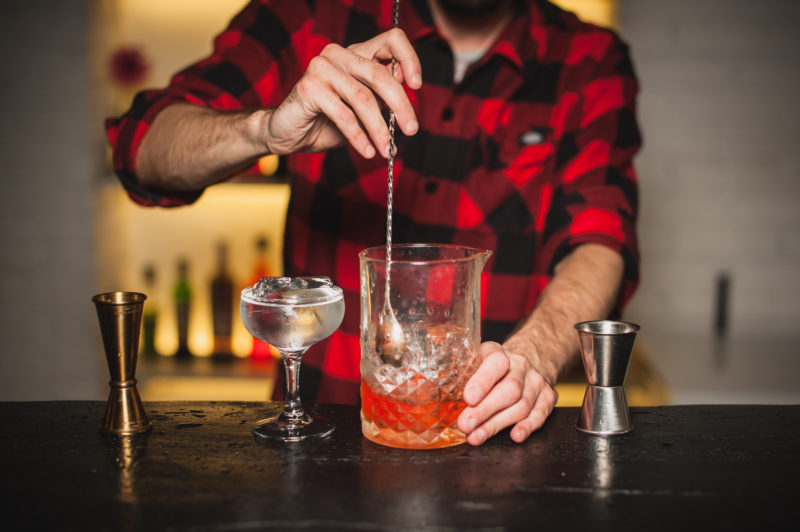
At its core, stirring a drink is a gentler method of mixing than shaking. It keeps the ingredients from becoming muddled, and keeps the mouthfeel and texture of the drink intact. With this in mind, stirring is often used with cocktails that put the actual flavors of the base spirit at the forefront, allowing it to shine through with little distraction.
Stirring a drink also ensures that the ice does not break, and the drink cools, but does not become too cold. It also prevents the drink from diluting, watering down the more pronounced and desirable spirit flavors in most stirred drinks. Less water and less aeration also means a clear and sharp look to the drink, along with the original more silky smooth texture of the involved spirit.
In stirred drinks, this also means that the size of the ice comes into play. Smaller cubes will melt quicker, larger ones will go slower. It all depends on how much you want the flavor to change over time and if you want a change of pace from the same ice in the glass over and over. Or, in the case of the martini, no ice whatsoever.
Some examples of stirred cocktails include:
- Martini
- Manhattan
- Old Fashioned
- Negroni
- Imperial
Shaken: When to Go to Town
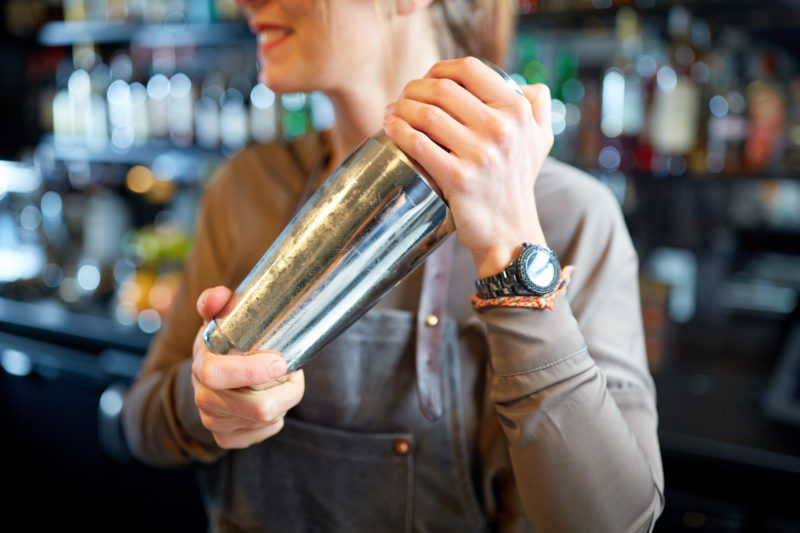
A shaken drink will act in direct contrast to a stirred one in almost literally every facet of creation. Where stirring keeps ice from breaking up and over-cooling the drink, shaking violently cracks off bits of ice to make the drink nice and cold. This also has the effect of watering down the cocktail, lessening the bite and flavor of the base spirit so that it can mix well with other added ingredients.
Shaking is especially important if any strong flavors or heavy ingredients are going into the mix along with the spirit. Stirring a heavy drink will likely leave the flavors improperly blended and make for an inconsistent cocktail. One sip may be nothing but fruit—or, Heaven forbid, egg white—while another may be nothing but spirit, defeating the purpose of the mixed drink. A decent shake properly binds all the ingredients together and makes for a consistent, perfect flavor. (And time spent shaking is important depending on the drink—some take over ten minutes.)
Some examples of shaken cocktails include:
- Daiquiri
- Margarita
- Whiskey Sour
- Mai-Tai
- Ward Eight
In the End, It’s All Just Guidelines
There are very few, if any, hard and fast infallible rules of bartending. What a drink contains, how it’s prepared, whether it’s shaken, stirred, built in the glass, lit on fire…you get the point. All of the aforementioned pieces of bartending can be tailored to taste, style, and clientele. At the end of the day, what matters is that the patron enjoys the drink.
So shake the Manhattan, stir the Cosmo, be a rebel. Do whatever you have to do to make it taste great. Just keep my Martini stirred, you savages.
Schedule 15mins to chat with a product specialist
Start a FREE Trial Today! BevSpot offers full product education and account setup for all customers! No card Information needed!
(As a slightly apocryphal post-script, I am aware that some have argued that Bond ordered a shaken martini to combat the oily nature of lower grade potato vodka that would have been available at the time, mixing the oil more forcefully and diluting its effect.
I consider this to be a reach, as James Bond likely does not drink cheap vodka, and, in the novel Casino Royale, specifically asks for grain vodka, which would not be oily to begin with. He may have done it to dilute the drink specifically to appear more intoxicated than he really was.)
How to (Safely) Kick a Customer Out at Your Bar
“You f&*$ing b*$%@!”
I looked up in time to see my coworker get an unfortunate piña colada bath. The guest kept screaming obscenities as security carried them away. It was a busy Saturday night at our very high-volume restaurant. At a venue like ours, it was only a matter of time before the mixture of alcohol, adrenaline, and competition resulted in people making poor behavioral decisions. While not every situation of a guest being cut off ends with a coconut-scented shower, that kind of aggression is an all-too-common experience for bartenders. Part of the problem is we, the bar staff, are educated to understand alcohol, but our guests aren’t.
Start Your Free Trial With Bevspot Today!
It’s a common problem that various establishments approach differently. I surveyed 25 fellow hospitality professionals to better understand why they kick out customers and how they handle the conflict – probably the least fun part of working at a restaurant, next to doing kitchen inventory.
Handling conflict: You’re cut off
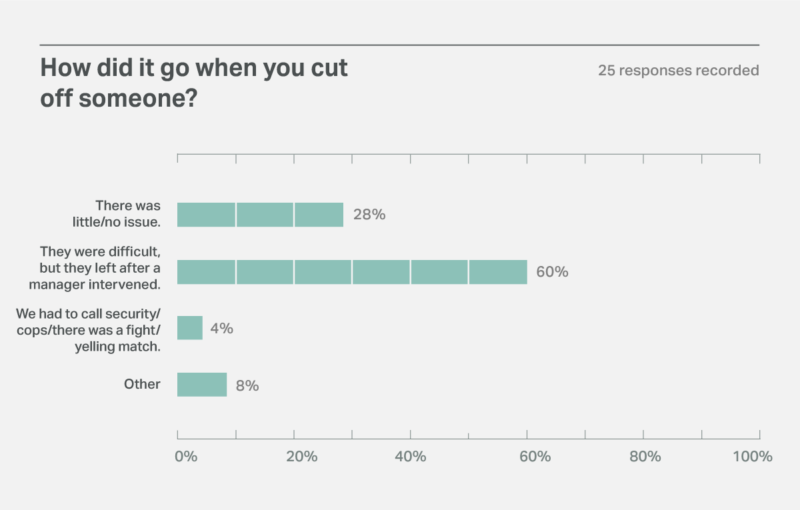
When the bar is full, there’s never an easy way to tell someone they can’t have their booze. Cutting off a guest puts the bartender in an awkward and sometimes dangerous position. With the exception of one time, most guests I’ve confronted usually become aggressive, defensive, and menacing.
Mark Schettler of New Orleans’ Bar Tonique had this to say, “I think that the baseline job of any bartender is to keep everyone, staff included, feeling safe and comfortable. If a guest, or staff member, isn’t able to abide that, they’re gone. Sometimes, a warning and/or redirect is in order and suffices, sometimes the line is crossed so egregiously that the offending party has to be immediately 86’d.”
It’s a bartender’s job to make sure that their customers have a great experience, and are safe in the process. We aren’t looking to kick people out when we cut them off, but that seems to be the assumption by many, and a cut off unfortunately can turn into getting kicked out.
Why do customers get kicked out?
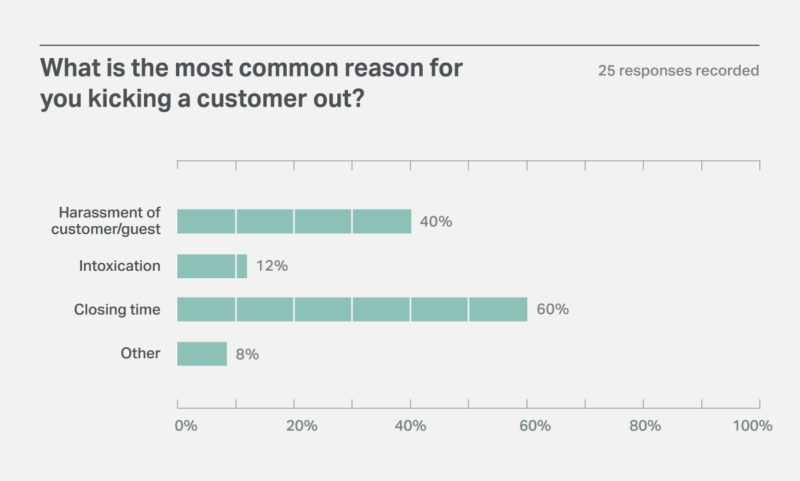
While closing time was the number-one surveyed reason for kicking out a customer, harassment was the most common selection on the first day I released the survey. It was also a main anecdote cited by those who shared stories. One person who took the survey shared this, “[I have] almost too many [stories] to share. I have had bottles thrown at me, been called every name you can possibly imagine, been challenged to countless fights, stepped into the middle of several others, tackled fleeing felons, and even been threatened with a glass that a guest had just broken over the bar.”
How to kick them out, safely
If you have to kick someone out, make sure the person who does it is someone with authority and autonomy to make bigger decisions, such as a head bartender or manager. While the law empowers any bartender to refuse service, it’s best to let those above you handle the situation.
Managers should also be trained on how to best handle cut-offs. Keep your cool to avoid triggering an emotional response. Get the story from the guest and be empathetic, but don’t throw your bartenders under the bus. Your responsibility as a manager is to protect your business, which includes your bar staff and your guests.
Whether you’re a bartender or a bar manager handling a situation, document everything so everyone can learn from the experience. It’s good practice to keep a notebook for bartenders to fill out with details on each day. The notebook was incredibly useful in instances where I had to document an event with police.
Teamwork is key
Communication is key to running a successful bar and bar team, especially in times of conflict. After the event, gather the team together to discuss what happened and document it together. Nobody likes to kick people out, but when you demonstrate solidarity in doing right by the business and each other, the situation will be easier to handle, and you’ll be better prepared for the future.
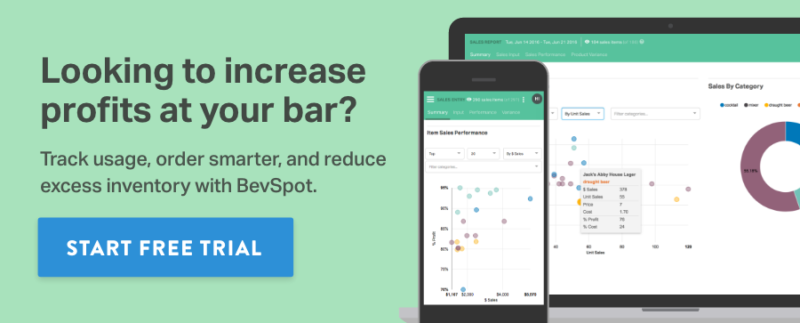
Should Aspiring Bartenders Go To Bartending School?
For a high cost and potentially low return on investment, bartending school math doesn’t add up…
Bartending as a job has a noirish mystique about it. Most everyone has thought about becoming a bartender at one time or another. But, being a bartender isn’t just about pouring drinks. It involves psychology, management skills, chemistry, math, and so many other things that are beyond the view of an average patron.
Should aspiring bartenders consider attending bartending school, or is learning on the job the best way to advance your bartending acumen? Evidence shows that, for the small benefits classes provide, nothing beats real-world experience.

The benefits of bartending school
Bartending school is not entirely without its benefits. A good one will give students a base knowledge of mixology and drink recipes, provide basic training on point of sale systems and cash handling, and assist in job placement upon graduation. As you’re researching options, make sure to ask what other skills you’ll learn in addition to just mixing drinks. Since most classes cost hundreds of dollars, be sure your experience is well worth the money.
We spoke to a bartender in Chicago who took classes online and he said, “I did it to make money while I was in grad school. I make more money than I’ve ever seen before.” Bartending school helps those with busy schedules learn the skills they need to become a bartender when they may not have the experience to fall back on.
The limitations of bartending school
Unfortunately, not everything about bartending classes provides the right environment for becoming a masterful bartender. Many classes use colored water and foam garnishes all throughout the course, only using real alcohol for the final parts of the class, and sometimes not even at all. While this is fine for pouring and memorizing counts and recipes, it doesn’t adequately prepare anyone to work with real garnishes, flames, or twists. It also doesn’t teach a beginning bartender how a drink should actually taste once it’s made, robbing them of a vital skill that ensures consistent quality in a real bar.
Once in the real world, many bar managers don’t look for a mixology certificate, but it can actually be seen as a detriment, since it can scream that a bartender has no experience. Many managers prefer to hire inexperienced employees as bar-backs or someone lower on the totem pole than bartender, allowing them to train new employees to their standards and preferred practices.
Work your way up
The traditional method of becoming a bartender is to first be hired as a barback, dishwasher, waiter, or other similar position. While all of these may seem like inferior jobs, they allow you to pick up vital experience and on the job training that is needed to become a bartender.
I remember my first job as a dishwasher. Sure, I learned how to wash dishes on an industrial level. I also learned how to properly plate, present, and cook food, where all the extra supplies were, how to stock the bar, and a dozen other things that no school could teach. Similarly, a waiter or barback can learn how to judge crowd needs, how to fix broken bar equipment, and the individual needs of the bar they work in.
“I learned on the job when I was 21,” says bartender Jessica Stang, bartender at both Bases Loaded and Woodlawn Tiki Bar just south of Buffalo. For her, learning how to be efficient while controlling a crowd is vital. “The ability to be fast and efficient, while still interacting with customers. Being kind and outgoing, while still keeping control because with alcohol, things can get out of control fast.” It’s one thing to make drinks in a controlled environment under a timer with colored water. It’s another thing to do that with noise and a boisterous crowd to control.
For all the Facebook ads and clever copy, it seems that bartending school is somewhat less than necessary. While it does offer base knowledge that can be helpful to those just starting, a more thorough (and free) education comes from starting at the bottom and working their way up. Few bartending schools will offer the successful job placement and critical tertiary skills required to become a successful bartender.
Schedule 15mins to chat with a product specialist
Start a FREE Trial Today! BevSpot offers full product education and account setup for all customers! No card Information needed!
BevSpot’s Roundup of the 10 Best Bar Industry Podcasts
What are you listening to?
Officially “invented” in 2004 by BBC journalist Ben Hammersley, the podcast has changed the way information is shared through audio storytelling. Podcasts seek to inform, educate, or entertain, and the best ones accomplish all three at once. There’s a podcast for every industry these days, including the beverage and hospitality industries. We scoured the internet and rounded up the 10 best bar industry podcasts available. It’s a sampling of options for your auditory palette—you’re sure to find at least one that appeals to your tastes.

Podcasts about the bartending life
Bartender Journey is hosted by Brian Weber, who now also hosts the official Tales of the Cocktail podcast. It’s a comprehensive, high-energy podcast that features engaging interviews with industry pros and high-level observations. Brian also drills down into specifics on bar operations, liquor brands, and cocktail lore.
Bartender HQ covers topics related to life behind the bar, including topics like being authentic, sustainability, cocktail balancing and photography, and flair challenges. Host David Sangwell also takes a closer look at specific spirits and conducts tastings with “The Vermouth Ambassador” Samuel David Boulton. It’s a nice blend of education how-to’s, industry news, and fun.
Bartenders Show, hosted by Richard Seuss, covers an array of topics related to life as a bartender. From the latest news, to the most informative bartending websites, to bartending flair, Richard covers it through informative interviews and stories of his own experiences.
Podcasts about industry tips and best practices for your business
Profitable Hospitality from Ken Burgin is exactly what it sounds like—a podcast full of useful tips and guides for optimizing your hospitality businesses. Since the show is operations and marketing-focused, it’s likely to appeal primarily to owners and managers. But, with hundreds of episodes already recorded, any industry professional is sure to find a relevant topic.
BarCode TSI – The Service Industry Podcast is a newer service industry podcast that aims to “shed light on topics we all run into while doing our job.” Their interviews with bartenders, servers, managers, and owners give a we’re-in-this-together feeling. The podcast provides useful ideas for solving common problems, regardless of your level of experience in the industry.
Podcasts about mixology mechanics and cocktail construction
The Mixology Talk Podcast: Better Bartending and Making Great Drinks is brought to you from the Bay Area by Chris and Julia Tunstall, who are also the founders of the popular craft bartending website A Bar Above. They’ve been around over three years and the podcast is meant for both bartenders and guests alike. Topics include spirits, bitters and other ingredients, history and culture, hosting how-to’s, techniques, and guest interviews.
True to its name, Simple Cocktails Podcast is a straightforward, 20-minute podcast that explores the properties, legacies, and potentials of various spirits, brands, and cocktails. It’s a great resource for those either new to the profession or those looking for approachable, user-friendly information.
Behind the Bar Show, hosted by “Mr. Martini,” is a podcast veteran started in 2006. While it hasn’t been updated since 2015, it does offer a vast backlog of episodes focused on specific spirits—from gin, vodka, and whiskey, to sake and vermouth. If you’re looking for something specific, you may very well find it here.
Podcasts that will make you laugh
The Bar Buzz Podcast is the brainchild and virtual stage of C.J. Spaulding, a longtime bartender and server who authored Life Behind Bars-An Irreverent Guide to the Restaurant Industry. Both the book and podcast feature hilarious anecdotes about the types of over-the-top—or painfully cookie cutter—personalities and absurd things that can happen all too frequently when working in the industry. If you’re looking for commiseration and laughs, Bar Buzz is for you.
In At The Bar, Florida-based hosts Mike and Jeff get creative with their topics, including “Shame Drinking PBR”, “What Your Drink Says About You”, “Jeff’s Drunk Movie Reviews”, “Craft Beer Mediocrity,” and “If Pumpkin Beers Died.” They also spotlight specific breweries and industry events. Overall, At The Bar is a great podcast to listen to if you enjoy irreverent humor.
Did we miss one of your favorite podcasts in our roundup? Share it in the comments below.
Schedule 15mins to chat with a product specialist
Start a FREE Trial Today! BevSpot offers full product education and account setup for all customers! No card Information needed!
How to Successfully Leverage Instagram to Boost Bar Business
You don’t need to be a social media whiz or professional photographer to effectively utilize the photo sharing platform…
For bars and restaurants, using Instagram as an effective brand-building tool isn’t as simple as posting a picture of a pretty cocktail and encouraging followers to “smash that like button.” In truth, any one picture itself should play but a small role in a business’ broader social media campaign to tell its own story and connect directly with both pre-existing and potential new customers.
But leveraging the photo-sharing platform successfully can be a challenge, particularly for publicans that don’t have a grasp of the fundamentals of either photography or social media. This is okay too, because you don’t need to be Mark Zuckerberg or Ansel Adams to navigate this stuff. You need only to heed some advice from experienced users. And there are few people more qualified on the subject of Instagram, especially as it relates to framing alcohol and the life around it, than Kyle and Rachel Ford, the high school sweethearts turned husband and wife business team behind Ford Media Lab.
In fact, the Fords offer a fairly unique perspective on all this because of their professional experience relating to all sides of the equation here. They’ve worked behind the bar as bartenders in San Francisco and New York; they’ve worked as brand ambassadors for prominent liquor companies Rémy Cointreau and Tanqueray Gin; and now, as business owners themselves, a major part of what they do is take expertly composed cocktail photos for liquor companies. But don’t take it from us. Between them – @kyle4d and @rachel4d – they boast nearly 50,000 followers and have been recognized as having one of the must-follow cocktail accounts by Saveur Magazine. So BevSpot caught up with them to learn more about what it really means for bars to do it for the ‘gram.
The following has been lightly edited for clarity.
What’s the utility of Instagram as you see it from a bar’s perspective? What do they get out of it?
Kyle:
People only know what you tell them, right? Social media is a free way to promote yourself, and I think telling that visual story, that’s part of the experience. You’re helping people who maybe haven’t been there yet, bringing to light what it’s like to come and stop by your bar. I think some bars do great jobs of that, simulating what it’s like, and the feeling of sitting at that bar. How do they successfully do that, tell that story and simulate that experience?
Rachel:
It’s not just photographing the drink itself, but photographing the drinks in context. So it’s taking the picture of the cocktail in a setting inside the bar where someone feels like they can just step right into it. I think with so much focus on just products and bottle shots and just a picture of a cocktail, there’s really something to be said for creating more of a lifestyle, drawing someone into the feeling of wanting to be in your establishment visually. I think that’s something that Instagram has the power to create when done effectively.
On that note, one thing I personally like is when businesses showcase the people who make it all happen. Pictures of drinks are cool, but I like learning about the personalities that make the place tick. So are there other things you like to see in good Instagram accounts that aren’t necessarily product-forward that help set them apart from another?
Rachel:
Definitely. I think something that we tackle both on our personal Instagrams and when we work with brands is addressing the entire picture of what the person they’re trying to address would be interested in. There are bars that are really good that have a really great grasp of kind of a 360-degree focus: “What does the person that visits your bar like to do outside of your bar? What do they like to wear? What are they interested in reading? What magazines do they think are cool?” You know?
So it’s not necessarily veering from the bar’s message by posting things that are way outside the box, but they have the ability to become a tastemaker for the types of person they want to attract by showing them what else is cool, what else is on their brand. People want to be in a place where they identify with what’s going on there. If you show them, hey, we’re just like you, these are the things we believe in and represent, it adds that element of “I’m gonna choose that bar over the one on the corner because I feel like they get me.”
Kyle:
Diversity is great because if it’s just a bunch of cocktail shots, I think it’s redundant. Certainly in the Instagram world there’s merit to having very consistent feeds. But I find the most interesting accounts I tend to follow mix it up, keep you on your toes. They consistently bring a certain story, but it’s not always the same thing.
Are there any mistakes you see people making? What are some things that don’t work on Instagram?
Kyle:
The nature of being in a bar, there’s a whole host of problems from a photographic standpoint. You’re usually dealing with very dark light, very poor light. Cocktails probably photograph best if you have a nice beautiful light streaming in through a window at midday. But the reality is that’s not usually when most people are drinking.

What are some easy remedies to that?
Kyle:
Knowing just the situation and how to take a better photo. You don’t need a degree in photography. But maybe just look around. My best thing, I try to stick to accounts that inspire me, and start mimicking things I like and incorporating them in my own photos. Follow any accounts you can that already do a great job.
Rachel:
From the standpoint of building out the bar, decorating the bar – there are bars in New York City and I can think of others elsewhere – you can tell they’ve chosen portions of their décor specifically for the Instagram-ability. Mother of Pearl in the East Village, for instance, had a cocktail in a tiki mug that was a shark’s open mouth and they dashed angostura bitters on top to make it look like blood was coming out of the shark’s mouth. It’s all over Instagram if you go to photos of their bar. It’s a highly Instagram-able thing.
Kyle:
It’s a great cocktail too. But they were thinking outside of the box and creating something that’s interactive with the guests so people would definitely show up like, “Hey, I want that shark drink.”
So part of the overall social strategy then isn’t just running your own account but getting other people to basically promote it for you on their own accounts?
Rachel:
Absolutely. People want to go where the cool kids are going. We follow a lot of people that are doing things that we’re interested in, and when we see that they’ve discovered a cool spot or destination, or they’re at a place we want to go to, that does influence our decisions as well. If a bar is telling you it’s cool, that’s great. But if another person that you align with is telling you it’s cool, that’s when you’re really going to go there.
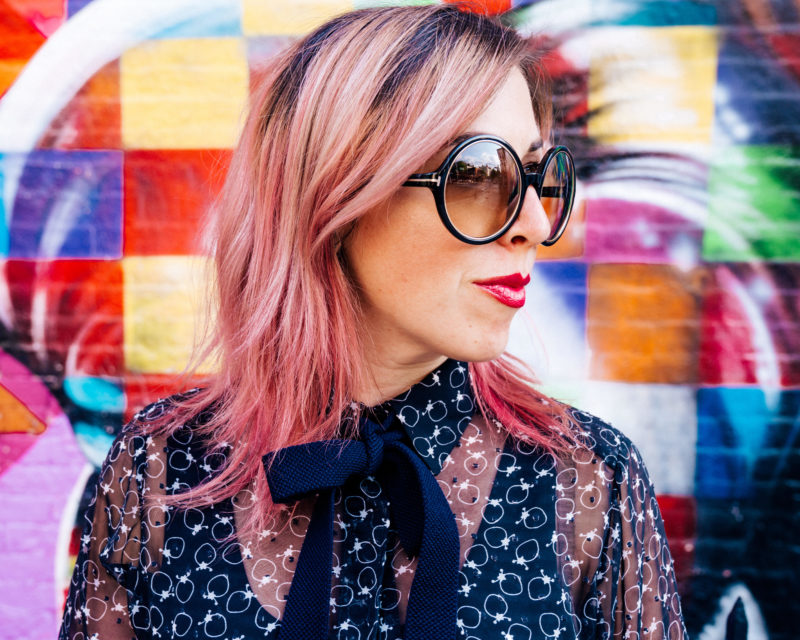
What do you look for in a well managed account?
Rachel:
We judge an Instagram account by its grid.
Kyle:
I always tell people to mind their grid. When you click on an actual page, is there a consistent story being told there? Because that’s what it is, you’re giving people a look into your business, or your life, and I think the most successful accounts consistently have that down to a T. That’s the one thing they all have in common, despite their differences in theme and photography. They’re telling a consistent story.
Rachel:
Which usually carries over into their products as well. If they have amazing attention to detail in their social channels that typically translates to the experience you’re going to have.
Do you have any advice for smaller businesses that might not have the resources to have a person dedicated to social media in any meaningful way? How can a resource-strapped business make the best of what they’ve got?
Kyle:
For bars and restaurants, just make sure you’re taking your photos in good light. Even iPhones now have aperture control – just explore the tools you have in your own pocket. It’s amazing how powerful these cameras are that people are waking around with but no one really knows how to use them. Smartphones are capable of doing a lot. We use professional cameras ourselves, but we certainly didn’t start there.
I would also encourage maybe looking into editing your photos maybe slightly more than Instagram allows you to. I’d use VSCO – their filters are a little bit more robust. There’s also Lightroom mobile. Lightroom is a heavy photography tool for professional photographers, but the mobile app is really nice.
Parting words?
Kyle:
On top of that, it’s Instagram basics. Make sure you’re geo-tagged so people can geo-tag your bars. Put it on your page’s menu. Maybe invent your own hashtag as well, something obvious. If your name is XYZ Bar then start hash-tagging your photos #XYZBar, and encourage other people to do so. Then, when you’re bored or have some down time, your account should go to the hashtag and geo-tag and start liking and interacting with anything that has to do with your business.
Rachel:
Instagram is social and it’s a very reciprocal platform. People feel good when they see they’ve been added, or they’ve been liked, or someone is following them. I think if a bar is going and liking people in their target market, certain individuals might think, “Oh wow, this bar in my neighborhood just started following me, I want go in and see what they’re all about.”
Schedule 15mins to chat with a product specialist
Start a FREE Trial Today! BevSpot offers full product education and account setup for all customers! No card Information needed!
5 Situations Where You Have To Fire a Bartender
Nobody likes to fire. Nobody likes to be fired.
Whatever side you’re sitting on, there’s nothing comfortable about the situation, but sometimes, it’s what has to be done. I’ve found there’s generally five categories that most firings fall under, but none of these is also without coaching possibilities/safeguards that help diminish them.
Start Your Free Trial With Bevspot Today!
1. Theft
Over the years, I’ve worked with people who have stolen from the place of employment. Some were so good at it, that it wasn’t until either they had already quit the bar that we discovered thousands in loss both in liquor and cash.
Theft isn’t just taking money out of the cash drawer either. Theft is also giving away drink or food without permission. Also, theft is also purposely not ringing in an order and pocketing the cash. Finally, theft is also staying on the clock while not doing work like being on your cell phone or taking a lot of smoke/bathroom breaks.
Suggested Policy:
Theft should always be a one-strike policy. There is never a “good reason” for stealing from a business. You don’t owe an employee an explanation beyond letting them know they’ve been caught stealing and do not qualify for unemployment. Theft is written into law, while you can put it into your employee handbook/training as an extra precaution, this policy is backed up by the legal system.
Safeguards:
As I got to know more about the industry and finances, I understood that security cameras are a safeguard for many things: not just the possibility of employee theft, but, if someone broke in, there would be documentation too. With cameras in place, your staff will be less tempted to manipulate money behind your back. Also, have it be policy that only managers handle the cash drawer at the end of the night. Document all voids, spills, breakage, and comps. If you want to really find out what’s going on with your money, beef up your bar inventory skills and limit inventory only to management or your head bartender.
2. Lying
You’ve got an employee who called out sick so you’re down a bartender. As bar manager, instead of doing inventory, you’re now working an unscheduled shift for the sick employee as well as inventory. The next day, one of your other bartenders is talking about where they were last night and mentions the “sick” employee was also out with them. Turns out they weren’t sick, they just really wanted to go to a concert.
Suggested Policy:
This should be a two/three-strike policy. The first time should trigger a conversation that talks about company expectations on behavior and accountability. Call in the employee before their shift and sit them down. Make it clear that, when they are scheduled for a shift, it is their responsibility to get the shift covered. If they aren’t actually sick and lie about reasons why, explain that it damages the trust between them and everyone they work with.
For repeat offenders, this conversation should already have happened, and, if they choose to do it again, hold them accountable to your company policy and let them go. It’s better to be down a bartender and trust the staff than have someone unreliable continue to work.
Safeguards:
Being transparent and honest tends to encourage the same from employees. Lay out the expectations on calling out sick. Check your local and state laws and be knowledgeable about what that means for sick employees. Having a plan for coaching employees out of bad behavior is an excellent means of strengthening your own bar management skills as well as encouraging them to step up their own responsibility.
3. Harassment/Disrespect
Harassment can be verbal, physical, sexual, and it’s often subjective. Which is partly why it’s so difficult to identify and coach. Whether it’s the chef making a sexist remark in the guise of a “joke” to the female bartender grabbing food from the window or an employee labeling customers by their race on the POS screen, there’s a line that shouldn’t be crossed and, too often, we are guilty of letting these issues go.
I have a general rule of thumb for harassment: if you wouldn’t say or do it to/around a kid, then don’t do it. I’d be naive if I didn’t acknowledge that us hospitality folk are notorious for our raunchy senses of humor, but there is a difference between a joke that everyone is in on, and a joke that makes someone, or someone’s identity, a punchline. I’ve also generally found that people who demonstrate harassing behavior also tend to disrespect management and their coworkers.
Suggested Policy:
This is another one-strike policy for me. Harassing behavior comes in many forms and, often times, the harasser has done it before without being held accountable. It’s not that they are unaware of what they are doing, but it’s been allowed to go on without consequence.
Safeguards:
With every new hire, talk with them about what harassment is, what it means for your company, and give them some examples that happen in bar situations. Let them know that you have a zero-tolerance policy for harassing, disrespectful behavior and that you are always free to support them or any coworkers if they are being harassed. Demonstrate to your employees that you have their backs if someone, a customer or a co-worker, is harassing them.
4. Failure To Meet Expectations
It’s always tough when someone you hired fails to meet the technical job requirements after significant time and training, but it does happen. I generally give new hires 2-3 months of on-the-job learning to get into a flow. But some employees aren’t ready for the technique needed or aren’t able to multi-task fast enough and it costs labor hours.
You can like everything about the employee, but they are costing your business money and underperforming compared to the rest of the staff. Underperforming staff can create resentment among the other staff because they’re working extra hard to make up for the weaker employee. Once resentment sets in, poor morale impacts customer service and you’ll find you might also lose those other employees.
Suggested Policy:
Don’t pull weak employees off the schedule or send them home early because you don’t have confidence in them. If you’re going to do that, you may as well just fire them. If you aren’t willing to coach weaker staff, then own that. Don’t make excuses. Consider adding into their training manual that training has a range of 2-4 weeks (or whatever you feel is best) depending on their demonstrated ability. It gives employees a timeline to pay attention to. I’ve found putting in a timeline works really well at getting employees to step up their game.
Safeguards:
When technical skills are a problem, I begin a series of conversations, possible further training shifts, and documentation. Sometimes it’s something as simple as miscommunication about expectations. Perhaps it’s something personal outside of work. Sometimes it’s simply that the employee just can’t do the job.
Regardless, this is one of the easier coachable situations. Was something not communicated properly? What’s going on in their life? Communication is key to good coaching. You hired them, so they clearly must have demonstrated that they could get to the level you need them at: do your best to get them to that level. Pair them with a good training bartender. Put them on shifts that allow them the growth in the area/s they are struggling.
5. Drunk/High On the Job
According to the U.S. Equal Employment Opportunity Commission, an alcoholic is a person with a disability and is protected by the Americans with Disabilities Act (ADA) if he or she is qualified to perform the essential functions of a job. In such instances, an employer may be required to provide an accommodation to the individual.
However, an employer can discipline, discharge or deny employment to an individual whose use of alcohol adversely affects his or her job performance or conduct. Do you know your employee? Don’t treat alcoholism as a problem, then chuckle at the hungover employee who went binge drinking the night before.
Suggested Policy:
This is often another one-striker. Intoxication/inebriation of any kind while doing one’s job is grounds for termination, especially if it’s stated in the employee handbook. You wouldn’t want your doctor operating on you while drunk or high, why would you serve anybody in that state of mind too? Bartenders are handling sharp objects, electronics, glass, and more. It’s a ticking time bomb.
Safeguards:
You can’t just fire an employee outright for perceived alcohol/drug use. If your employee has consistently shown up demonstrating clear signs of inebriation/drug use, document each time as well as have a conversation with them about what’s going on. Approach them with compassion and remove them from a public area to a designated area of privacy until they can be taken home or to a medical facility if needed. If it’s something they explain is a problem, depending on the employee policies your company has established, discipline or suspend the employee or require the employee go through rehabilitation.
No Bad Blood
Every company is different as is every employee. Most of the above situations can be handled with similar disciplinary actions, but only you as the employer/manager know your employee and situation best.
For me, leading with compassion and questions first often led to the best solutions and least firings. Also, it should always be done in person. No email, no phone, no text. Show respect. The employee is still part of the hospitality network, and that kind of dismissal doesn’t make you look good. You don’t want a reputation as a bad employer/manager that is backed up by poor action. Whatever you choose to do, be consistent, be direct, and be sure when you let an employee go.
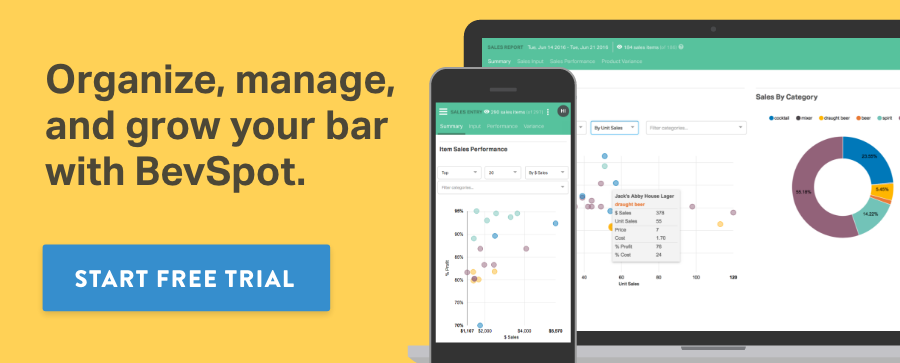
Schedule 15mins to chat with a product specialist
Start a FREE Trial Today! BevSpot offers full product education and account setup for all customers! No card Information needed!
BevSpot Launches Channel Partner Network
Restaurateurs embody the ultimate entrepreneurial spirit—following their passion to deliver their guests the best experiences in a challenging industry.
While we all live in an increasing technologically-connected world, the $799 billion U.S. restaurant industry still operates with limited visibility into the factors that drive profit margins. Having worked with thousands of restaurateurs, and being in the family business myself, I understand the struggle.
That’s why I’m excited to announce BevSpot’s Industry Partner Network, the industry’s only channel-distribution model for bar management software. Channel partners can now offer their clients the best-in-class bar management solution to grow their business.
Why An Industry Partner Network
At BevSpot, we understand that bar owners and managers rely heavily on vendors and trusted advisors to succeed. We aim to empower our partners to sell technology that will change how their clients manage their beverage programs, and ultimately improve their bottom line. Just as POS technology transformed the restaurant industry, there is a massive opportunity for cloud software to disrupt the bar industry.
Throughout my experience in restaurant software at Upserve and Fishbowl, I’ve seen how successful this channel-distribution model can be for partners and clients alike. By enabling partners with software that delivers immediate ROI to their clients, partners strengthen trust among their client base and expand their core business portfolio.
Why Partner with BevSpot
As a BevSpot Industry Partner, you’ll earn a meaningful revenue share for introducing your clients to BevSpot. We partner with POS VARs, restaurant consultants, and other suppliers that have established relationships built on trust. Together, we’ll delight your clients. Our dedicated Partner Account Executives handle all product demonstrations, as well as new customer on-boarding, training, and support. You book the demo, we deliver results.
With BevSpot, your clients will experience:
- Faster, collaborative inventory management
- Smarter ordering based on inventory usage and pars
- Visibility into sales performance metrics, such as pour cost and sales—so they can maximize margins
“BevSpot is the best value-add solution I’ve ever brought to my bar/restaurant clients. I’m excited to support a product and team that shares the same mission as me—deliver ROI and keep bars and restaurants in business. Since partnering with BevSpot, my clients have even referred me to their network and now I’ve got a flood of POS prospects lined up thanks to the value I’ve helped deliver.”
—Nick, POS Dealer
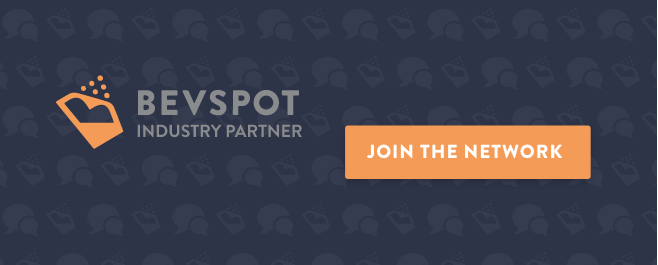
How Many Drinks Are Left In That Bottle?
So you’ve finished counting, but what’s really there?
As you exhale, the stress starts to melt away. You’ve just finished taking liquor inventory, and we know there are few better feelings. But wait—managing a profitable bar program shouldn’t stop there.
After working to mark down the percent of liquor in each of your bottles in BevSpot, you’ve got a good idea of what you’re sitting on. But exactly how many drinks are really left in those bottles? Being able to quickly translate those percentages into a specific number of cocktails will give you a whole new understanding of your program, and make you a savvier bartender. You can also use BevSpots drink price tool to create new drinks and accurately price them in order to expand your menu and improve profitability.
Preparing Your “Bottle to Drink” Measuring Stick
To calculate how many drinks you can get out of each bottle, we need to know how many ounces are actually in some of the most standard bottle sizes that we see. We do this by dividing the volume of the bottle by one ounce:
Number of 1-oz servings = bottle volume ÷ 1 oz
Though there are many varying liquor bottle sizes, but the ones most commonly used by BevSpot users are 750 mL and 1L bottles. The 750 mL bottle is probably the most common for all spirits and wines, so let’s use that as an example.
Let’s say your drink demands 1 oz of a certain spirit. One U.S. Fluid Ounce (oz.) is equal to 29.57 mL. Let’s do some simple math. (Trust me, if I can do it you’ll be fine.)
750mL ÷ 1 oz = 750 mL ÷ 29.57 mL = 25.36 1-oz servings
Judging by that, there are 25.36 1-oz servings per 750mL bottle (or 25 if you want to round down to a full number). This equation will work for any bottle size that is listed in milliliters on your bar:
1000mL ÷ 1 oz = 1000 mL ÷ 29.57 mL = 33.81 1-oz servings
Measuring How Many Drinks Are In A Partially Full Bottle
Now that you know how many 1-oz servings are in each of your bottles, it’s time to dig a little deeper. How many ounces of each base spirit are you pouring in each drink you serve? Is it 1.5 oz, 2 oz, or 3 oz? Whatever the pour size, it’s easy to translate that into a number of drinks once you know the percentage of the bottle that remains. (These examples are just for spirits, but can easily be applied to wines by the glass or even draft beer.)
To do this, multiply the number of servings in a full bottle by the percentage of the bottle that remains:
Drinks in partially full bottle = Drinks in full bottle × % remaining
For this example, say that I use a 1-oz pour of my spirit in a cocktail, and I have 40% of my 750ml bottle of that spirit (that is, I have 40% of 25.36 1-oz servings in my bottle):
25.36 servings × 40% = 25.36 servings × 0.4 = 10.14 1-oz servings
Measuring Drinks With A Different Pour Size
But what if your cocktail asks for a different amount of a spirit? Then we need to know how many servings of that new pour amount exist in that bottle. We can find this by dividing the number of remaining 1-oz pours by the new pour size (in ounces):
Servings of new pour size = Number of 1-oz servings ÷ new pour size in ounces
Let’s take a 2-oz pour as the example. Now we know I have 10.14 1-oz servings of liquor left, I just need to divide that by my 2-oz base pour to know how many drinks of the new pour size remain:
10.14 1-oz servings ÷ 2 oz = 5.07 2-oz servings
There we go—in this case, I’ve got about 5 full drink pours left in that bottle.
Drink Measuring Conversion Cheat Sheet
Of course, different drinks are going to call for different amounts of liquor, but with this flow and the handy cheat sheet below you can always know how many more full portions you have in each of those bottles. This will help you better stock your bar pre-shift, make smarter purchases every week, and hopefully help you increase your profits across your entire bar program.
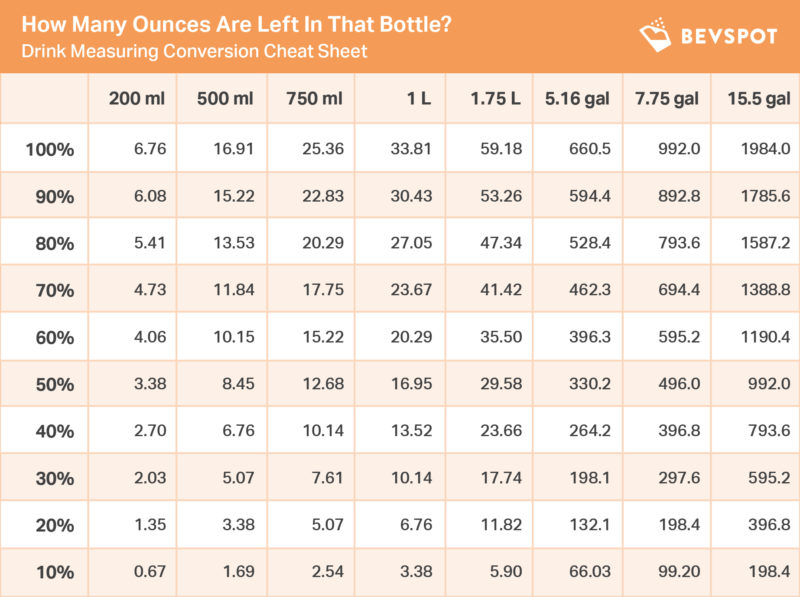
Schedule 15mins to chat with a product specialist
Start a FREE Trial Today! BevSpot offers full product education and account setup for all customers! No card Information needed!
The 7 Most Popular Beers in California Bars
Related: The Most Popular Beer & Liquor Brands of 2018
With a population larger than Canada’s and a GDP larger than Mexico’s, California is more than powerful enough to be its own country. After all, its economy is 50% larger than Texas’.
And since we’ve already looked at the most popular beer brands in the Lone Star State and for the United States as a whole, we’re long overdue for an examination of Californians’ favorite brews at the bar. And luckily for us, we’ve got users across the state: from the Bay Area and Lake Tahoe, to Fresno, Ventura, LA, Orange County, Palm Springs, and San Diego.
Here are the seven most popular beer brands among California BevSpot bars.
The following material aggregates alcoholic beverage distributor order data from dozens of California BevSpot bars and restaurants from January through August 2017. All figures represent percentages of orders in dollar terms.
Industry News Roundup: When Bar Fights Are Actually Good for Business
Bars across the country react to popular, controversial, and tragic current events…
This past Saturday, after months of hype and weeks of unceasing off-color trash talk, American boxing legend Floyd Mayweather Jr. finally raised his fists and played opponent to Irish mixed martial arts champion, and boxing novice, Conor McGregor. The fight itself was much maligned as a shameless ploy to make both men much richer. After all, McGregor had never boxed professionally, while Mayweather had never lost in his 49-fight boxing career.
As one of the most highly-anticipated sporting events of the year, the fight presented a tremendous opportunity to bars and restaurants. This fight wasn’t the only cultural phenomenon to inform the way bars did business this month. In fact, if there’s one lesson to be gleaned from the month of August, it’s that there’s no escaping the outside world.
How Bars Cashed in on McGregor/Mayweather
Buffalo Wild Wings screened the Mayweather/McGregor fight in half of its more than 1,200 locations across the country. This was no doubt an expensive endeavor, as bars paid a fluctuating fee for the fight depending on guest capacity, rather than the flat price viewers paid to watch at home. The upside to ponying up was obvious. Paying for the fight meant filling the bar with people more willing to pay a cover to watch than pay $99 themselves. Once through the door, they would continue to spend on food and drinks during the fight.
Buffalo Wild Wings was hardly the only bar that viewed the fight as a goldmine. Dave and Busters screened it at all 100 locations and Hooters screened it at 200, or about half, of its locations. It’s a formula that’s worked before. Wingstop CEO Charles Morrison said during an earnings call last year that the company’s “strong performance in [2015] was partially due to the boxing match between Floyd Mayweather and Manny Pacquiao.”
Smaller bars also benefited from screening the bout As one bar manager in Moorhead, Minnesota told her local ABC affiliate, “We started out taking reservations, and that just became a bit of a headache.” Snookers in Providence, Rhode Island paid “somewhere in the thousands” to screen the fight and charged a $25 cover to guests in hopes of packing the house. “This fight is going to be a part of our history,” owner Steve Goulding told the Sun Chronicle in advance of the fight. “I’m hoping for a good match and an even better night at Snookers.”
When Cultural Movements Dictate Business Decisions
The Chicago Tribune reported earlier this week that two Chicago bars—both owned by the same person—have decided to not air NFL games this season. The decision, they say, was made to show support of free agent quarterback Colin Kaepernick, who many suspect is being blacklisted by the league for his decision to kneel during the national anthem in protest of systemic violence against minorities. Said one bar in a statement detailing its stance, “The Bureau Bar will be supporting Colin Kaepernick’s cause and will not be showing NFL games until something changes.”
It’s Not Just Sports Driving Responses by Bars and Restaurants
As Texans braced themselves for Hurricane Harvey, a number of San Antonio bars vowed to stay open, and even offered Hurricane-themed specials. According to the San Antonio Current, the Bexar Pub was offering $6 16-ounce Hurricanes; Chisme hosted a hurricane watch party; and Cured let loose its sense of humor in the face of tragedy by serving “Harvey Wall Bangers” at the bar.
Something to Consider
Especially as it relates to culturally-divisive issues and tragic events like Hurricane Harvey and Colin Kaepernick, it’s important for bars to be cognizant of their motivation behind leveraging these things to boost business. People like businesses with perspective; they don’t like when businesses capitalizes on serious issues to line their own pockets.
How to Approach Waitlisting with Reservation Technology Solutions
You’re reading this on a smartphone, aren’t you?
You might be anticipating catching a ride home by calling an Uber. The world we live in has been fundamentally changed by technology. Why shouldn’t that apply to your work, or the way you eat out, as well? For almost a decade now, services like OpenTable, NoWait, and a bevy of others have been changing the way both customers and restaurateurs make reservations and manage wait lists. By bringing analytics into the equation, along with simple-to-use technology, these text-to-table services have changed the way the modern restaurant operates.
But is using such a service right for your business? And if so, which one?
OpenTable: The Goliath in the Room
The largest provider of reservation booking and management software for the last decade is OpenTable. OpenTable brings both experience and a vast customer base to the table. For consumers, this is a boon on many levels. They’re more likely to find their favorite restaurants and bars on the site, with more reviews by more patrons. This also makes OpenTable desirable for restaurants that are looking to fill more tables, more efficiently.
Businesses that make use of all of OpenTable’s functionality and find that it draws in enough customers to compensate for the cost of using their software will gain an increase not just in customers but in efficiency and online footprint via OpenTable’s review and suggestion service. However, some businesses find the initial and recurring fees costly. But, these same businesses can feel like not paying for such a service would push their customers to competitor restaurants who do list on OpenTable.
The Competition: NoWait, Waitlist Me, Resy, and More
Once upon a time, OpenTable’s dominated 90% of the market, but a flood of similar services has dropped their ownership significantly. Some of these competitors offer the same features, while others go after a slightly different crowd. But they all have a similar goal—help restaurants get patrons in the door.
The most recent splash in the market was made by NoWait, recently acquired by Yelp. NoWait tackles a slightly different angle than OpenTable. Rather than placing firm reservations, NoWait allows guests to remotely add their names to waiting lists at over 4000 restaurants and chains. Combined with Yelp’s mammoth customer base and reach they present a challenge to OpenTable’s hold on the market. Like OpenTable, NoWait offers a streamlined customer service interface, the ability to more efficiently and quickly turn tables, and an analytical data dive into your customer’s info and dining patterns. While some of the higher end packages offered by NoWait do match OpenTable’s high price, they also offer cost-friendly options that are lighter on features for businesses that don’t need to make use of all the available bells and whistles.
Tables Ready, Waitlist Me, Resy and a dozen other competitors offer up similar waitlisting and guest management services to OpenTable, at much lower prices than OpenTable. While not all of them offer the same features, for the business on a budget, they offer a cheaper alternative to a giant that keeps restaurants in the online reservation game.
Three Recommendations for Integrating Online Reservation
Online reservations and digital table management are a welcome addition to the restaurant industry, both to businesses and their customers. The methods are many, and the risks are real. Here’s our three top tips for making a successful transition from analog to online and digital guest management:
- Know What You’re Getting: Each service offer different options of varying worth to differing people. Understand what’s important to you What features do you want? Which do you need? What’s superfluous? What’s your budget and expected ROI (return on investment)? Be informed.
- Go All In: Integrating any new service into your business will be a big change. Take advantage of every feature you can. Learn all the ins and outs of what you can do with it, and what you can’t. These services have help centers, and OpenTable even has a training page available. Have any particularly good trainers on your staff? Institute a training program at your business to make sure everyone knows the ins and outs of the software your restaurant now relies on. This ensures you aren’t bottlenecked by having only a handful of employees who fully understand all your new capabilities. You’re paying hard earned money for the service—make it count.
- Don’t Lose Yourself: Remember that while new technology is exciting, and enthusiasm is one of the keys to successful implementation, don’t find yourself over-focused on this new technology. It should be a tool in your belt meant to strengthen the implementation of the principles and passions that got you to where you are, not a completely new and all-consuming business model. Keep hold of the core values of your business. Integrate. Don’t substitute.
With so many options available and a younger market more likely to find your business through Yelp or a similar service, adopting an online reservation system is a no-brainer. Just make sure you know what you’re getting into, and what you expect to get out of it. Research well, and, hopefully, watch the tables fill.
Schedule 15mins to chat with a product specialist
Start a FREE Trial Today! BevSpot offers full product education and account setup for all customers! No card Information needed!
